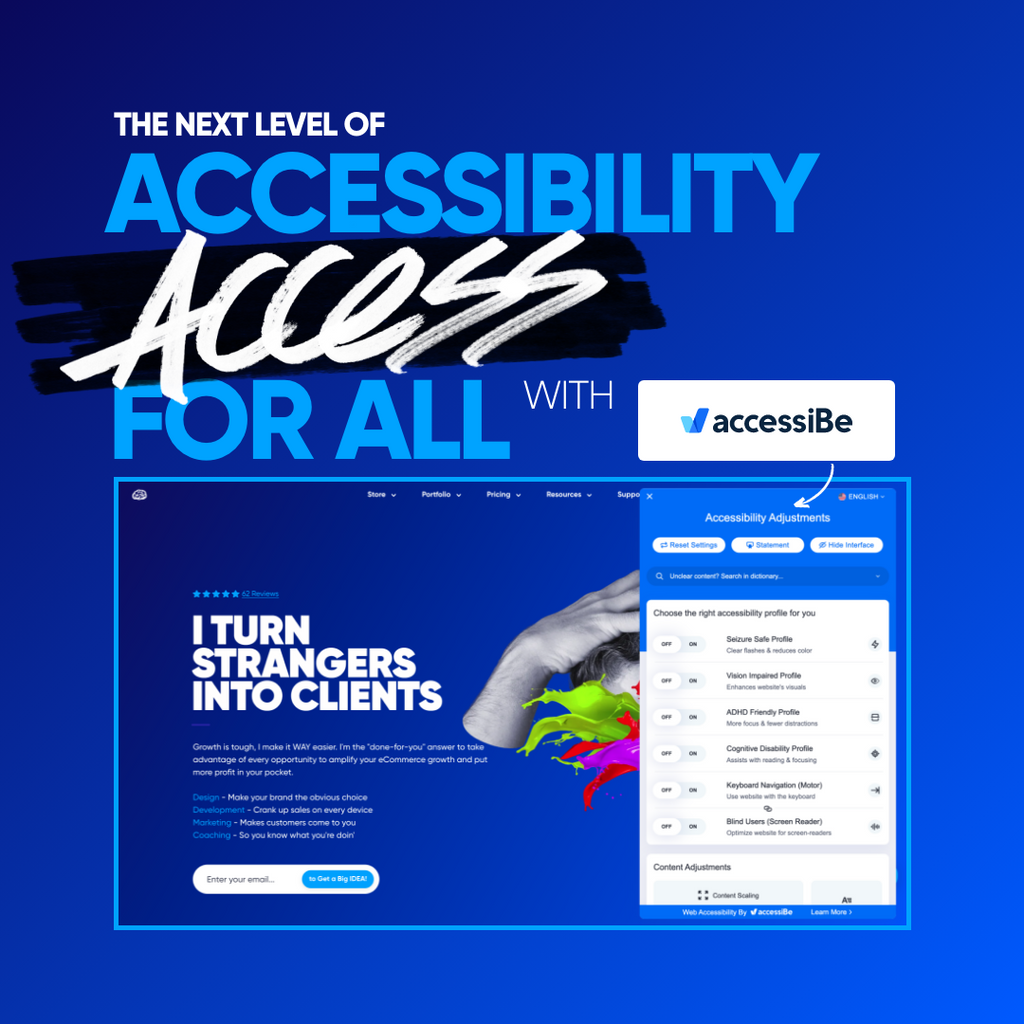In this world of technology, you can hear many uncommon terms that can baffle you. And web designing is no exception, with its buzzwords and other terminology that can sound like an alien to an untrained ear. But, if you want to be a professional programmer, you must know about the industry-standard terms.
It usually varies from one
In this world of technology, you can hear many uncommon terms that can baffle you. And web designing is no exception, with its buzzwords and other terminology that can sound like an alien to an untrained ear. But, if you want to be a professional programmer, you must know about the industry-standard terms.
It usually varies from one web development language to another, so anyone might feel a little intimidated by all these terms. However, you must be aware regarding certain terms used in the industry to establish yourself as a web developer. So, in this article, we will discuss 70 web designs and development terms that you should know.
301 Redirect
A 301 Redirect indicates the shifting of an URL’s location from one place to another. Generally, it occurs when a new website replaces the old one.
404
404 refers to an error page, especially when a user tries to reach a non-existent website. It also occurs when a user mistypes the website’s URL.
Agile
Agile in website development refers to a methodology assigned to determine working principles. The primary motive is to provide the customer with flexibility and satisfaction.
ALT Tag
If a website fails to display the image, the ALT tag helps showcase an alternative text in a location. So, a user gets to see a text in place of an image.
508 Compliance
The 508 Compliance makes a website accessible even for a person with physical disabilities. So, all American websites must follow these guidelines while developing them.
API
Application Programming Interface (API) helps two separate programs to interact with each other. Thus, making some website codes available for programmers in the process.
Application
An application is computer software designed to carry out a specific task. It can be a group of several programs or self-contained.
Breakpoints
At a breakpoint, your website adjusts its content to fit different screen sizes. It is basically a responsive design that gives a user the best visual experience.
Backend
Backend refers to the server-side of the web page and its connection between database and web browser. Basically, you can determine how your website will operate.
Browser
A browser is a software that helps you to gain access to the internet and its various websites. By just typing the URL of a website on the address bar, you can access any web page.
Bootstrap
It is an open-source CCS framework that helps to design websites and other web-based applications. Developed by Mark Otto, Bootstrap is completely free and has pre-defined classes, which makes the work easier.
HTML
HyperText Markup Language is a programming language which uses text formatting tools like CSS to build web pages and display texts, images, links, and other documents in a browser.
Header
Header refers to the top part of a web page where you can put company names, page markings, logos. A header will appear on every web page of a document.
JavaScript
JavaScript is a programming language that developers use to add and customize multimedia, videos, animation images, etc. It works together with HTML to create and develop a web page.
SEO Titles
SEO Title is an HTML product that holds information about a web page like author description, copyright, etc. It does not appear on the main web page but remains encoded to help Search Engine Results.
Mobile-First
It is a type of web design that targets the smallest screens first. In a Mobile-First design, developers frame the website preferably for mobile phones.
MySQL
It is a database management system (DMS) that is open source. Based on Structured Query Language, this system manages the collection of data of a website in real-time.
Navigation Menu
A navigation menu locates on the top or sidebar of a website to help viewers navigate and easily find website menus. A simple navigation menu ensures an easy customer interface.
Open Source
When software comes out with an accessible source code, and licensed users can study and make changes to the software, it refers to open-source software.
Operating System
The operating system is software that enables the user to manage applications on devices like computers, smartphones, etc., Windows, Android, etc. are some leading operating systems.
Caching
Caching is a process that stores temporary data in your computer, which speed-up a website’s load time. So, your computer can reload the data each you visit the website.
Call To Action
With Call To Action (CTS), a website advises the user to take a certain action. It generally refers to an action phrase like buy now.
Code
Coding is the programming language that a developer uses to control the action of a website.
CMS
With Content Management System (CMS), you can edit the entire content of a website. For example, you can create, publish, delete, and more.
Cookies
A small file that a website creates temporarily on your computer to identify your web browser. It helps the server to note down your preferences.
DNS
Domain Name Server (DNS) controls the domain name of a website. So, when the users want to access any specific website, DNS helps them to find their desired location.
DPI
Dots Per Inch (DPI) counts the number of dots present in one inch of any printed image. So, with high DPI, the image quality also increases.
EPS
Encapsulated Postscripts (EPS) is an image file format, which is easily compatible with PostScript printers. It helps to transfer documents among graphics applications.
Frameworks
Frameworks make your website building process much easier and faster. Basically, it provides a structure to web developers and minimizes their hard work.
Graphical User Interface
A Graphical User Interface (GUI) is an interface where users can interact with icons, buttons, and more. Thus, users can have a better experience during the interaction.
Hosting
Hosting is a process of housing, maintaining, and serving web servers of multiple web pages. Hosting services connect a web server software to the internet, thus, allows the user to access any website.
Front-end
The front-end of your website is what users get to access. Everything a user sees on the internet, including dropdown menus, colors, etc., is the front-end.
Domain Name
A Domain Name is your website’s URL. So, when a user wants to access your website, he/she will search with this URL.
CSS
Cascading Style Sheets (CSS) is a language that describes the visual representation of your website. For example, colors, text size, layouts, and more.
Conversion
Conversion helps you to determine the result of your marketing campaign. It includes everything from subscribing to a newsletter to making an online purchase.
Algorithm
The algorithm is a set of instructions to perform a specific task. In simple terms, you can specify the actions to execute a given task, and the computer will follow that every time.
Bug
In simple terms, a bug is a coding error in your computer programming. It prevents the program from running effectively.
Adaptive Design
With adaptive design, you can determine how your website will appear on different devices. So, depending on the user’s interface, your website will adapt to provide an appropriate layout.
Data Structure
The data structure is one of the most important factors behind web development. It helps you to store and effectively organize the data.
Documentation
Documentation is an integral part of web designing. Anyone involved in the development process, management, or maintenance can refer to the documentation for any assistance.
Git
Git allows a developer to store and manage his/her programming codes. You can make any changes as a developer, especially during the development process.
GitHub
GitHub is basically the cloud interface version Git. Founded in 2008, GitHub has more than 28 million users all over the world.
HTTP
With Hypertext Transfer Protocol (HTTP), you can transfer data all over the internet. It sends data from a web server to a web browser.
Hex Color
It is a six-digit number, which developers use in HTML, SVG, CSS, and other applications to represent colors.
iFrame
It is an HTML structure that helps to insert one HTML document into another HTML page.
jQuery
jQuery is the library of JavaScript. It eases the process of using JavaScript as you can compress multiple lines of JavaScript code into a single line.
Languages
With the help of languages, a developer can create software and websites. They are mostly programming languages like C++, java, and more.
Meta Tag
A meta tag stores unique information about a website, like description and copyright: search engines like Google uses this information to put the website in relevant search results.
Libraries
Libraries store modules and pre-written codes that any developer can use while working on any particular language.
Minification
Minification is the process of minimizing the codes and reducing the file size. So, the website works faster and effectively.
MVP
Minimum Viable Product (MVP) involves releasing a pared-down version of your product in the market. It helps the developers to focus on core functionality.
MySQL
It is an open-source database management system and perhaps the most popular one among developers.
Page Speed
Page speed measures the time that a website takes to load its content.
Page Template
Page template refers to an already pre-designed page on your website that you can customize. Usually, a website contains 6-8 web page templates.
PHP
Hypertext Preprocessor (PHP) is a scripting language on the server-side. PHP can help you create dynamic content, encrypt data, send cookies, and more.
Python
Named after Monty Python, Python is a programming language. Many well-known companies such as Google, Dropbox, and Nasa have started using it.
Plugin
Plugin refers to an extension that provides an extra feature to the existing software—for example, all of your Google Chrome extensions.
Resolution
Resolution measures the size and pixel quality of an image. It can also describe the display quality of your computer screen and mobiles.
SSL
Secure Socket Layer (SSL) is a standard security protocol that encrypts all the data between browser and server.
UI Design
User Interface (UI) design involves designing the interface of your website with touchpoints and screens. UI also includes swift motion, clickable buttons, and more.
Text Editor
Text editor helps you to write simple and unformatted text. You can use it to write initial code and then covert a computer-readable format.
Wireframe
With wireframes, web designers can communicate with developers to discuss the structure of any particular website. It is your basic blueprint of a web page.
UX Design
A website with User Experience (UX) Design is all about giving users a smooth and hassle-free surfing experience.
Software Stack
The backend of your website consists of software stacks. These software’s work together to provide a good user experience
Sitemaps
A sitemap is basically the outline of the number of web pages on your website. Developers also use XML sitemaps for including additional information about an URL.
Information Architecture
Information architecture allows you to arrange and organize complex information in a logical way. So, with creating a user-friendly structure, a user will always find his/her way around it.
SERP
Search Engine Result Pages (SERP) are the result of your query whenever you search for something on the search engine. It helps you find relevant information related to your search.
Slider
A slider represents a series of images in a rotating manner, typically in the form of a slide show. With a slider, you can highlight important points of your web page content.
Vector Graphics
With vector graphics, you can create graphic images that need scaling. Vector is one of the main essential structures of digital imaging.
Propagation
Propagation refers to the time taken to register a website under a new domain or moved to a different server. It usually takes 48-hours as every DNS updates its record.
Conclusion
So, all these above terms will surely guide you as you step inside this world of programming and software engineering.
web development language to another, so anyone might feel a little intimidated by all these terms. However, you must be aware regarding certain terms used in the industry to establish yourself as a web developer. So, in this article, we will discuss 70 web designs and development terms that you should know.
301 Redirect
A 301 Redirect indicates the shifting of an URL’s location from one place to another. Generally, it occurs when a new website replaces the old one.
404
404 refers to an error page, especially when a user tries to reach a non-existent website. It also occurs when a user mistypes the website’s URL.
Agile
Agile in website development refers to a methodology assigned to determine working principles. The primary motive is to provide the customer with flexibility and satisfaction.
ALT Tag
If a website fails to display the image, the ALT tag helps showcase an alternative text in a location. So, a user gets to see a text in place of an image.
508 Compliance
The 508 Compliance makes a website accessible even for a person with physical disabilities. So, all American websites must follow these guidelines while developing them.
API
Application Programming Interface (API) helps two separate programs to interact with each other. Thus, making some website codes available for programmers in the process.
Application
An application is computer software designed to carry out a specific task. It can be a group of several programs or self-contained.
Breakpoints
At a breakpoint, your website adjusts its content to fit different screen sizes. It is basically a responsive design that gives a user the best visual experience.
Backend
Backend refers to the server-side of the web page and its connection between database and web browser. Basically, you can determine how your website will operate.
Browser
A browser is a software that helps you to gain access to the internet and its various websites. By just typing the URL of a website on the address bar, you can access any web page.
Bootstrap
It is an open-source CCS framework that helps to design websites and other web-based applications. Developed by Mark Otto, Bootstrap is completely free and has pre-defined classes, which makes the work easier.
HTML
HyperText Markup Language is a programming language which uses text formatting tools like CSS to build web pages and display texts, images, links, and other documents in a browser.
Header
Header refers to the top part of a web page where you can put company names, page markings, logos. A header will appear on every web page of a document.
JavaScript
JavaScript is a programming language that developers use to add and customize multimedia, videos, animation images, etc. It works together with HTML to create and develop a web page.
SEO Titles
SEO Title is an HTML product that holds information about a web page like author description, copyright, etc. It does not appear on the main web page but remains encoded to help Search Engine Results.
Mobile-First
It is a type of web design that targets the smallest screens first. In a Mobile-First design, developers frame the website preferably for mobile phones.
MySQL
It is a database management system (DMS) that is open source. Based on Structured Query Language, this system manages the collection of data of a website in real-time.
Navigation Menu
A navigation menu locates on the top or sidebar of a website to help viewers navigate and easily find website menus. A simple navigation menu ensures an easy customer interface.
Open Source
When software comes out with an accessible source code, and licensed users can study and make changes to the software, it refers to open-source software.
Operating System
The operating system is software that enables the user to manage applications on devices like computers, smartphones, etc., Windows, Android, etc. are some leading operating systems.
Caching
Caching is a process that stores temporary data in your computer, which speed-up a website’s load time. So, your computer can reload the data each you visit the website.
Call To Action
With Call To Action (CTS), a website advises the user to take a certain action. It generally refers to an action phrase like buy now.
Code
Coding is the programming language that a developer uses to control the action of a website.
CMS
With Content Management System (CMS), you can edit the entire content of a website. For example, you can create, publish, delete, and more.
Cookies
A small file that a website creates temporarily on your computer to identify your web browser. It helps the server to note down your preferences.
DNS
Domain Name Server (DNS) controls the domain name of a website. So, when the users want to access any specific website, DNS helps them to find their desired location.
DPI
Dots Per Inch (DPI) counts the number of dots present in one inch of any printed image. So, with high DPI, the image quality also increases.
EPS
Encapsulated Postscripts (EPS) is an image file format, which is easily compatible with PostScript printers. It helps to transfer documents among graphics applications.
Frameworks
Frameworks make your website building process much easier and faster. Basically, it provides a structure to web developers and minimizes their hard work.
Graphical User Interface
A Graphical User Interface (GUI) is an interface where users can interact with icons, buttons, and more. Thus, users can have a better experience during the interaction.
Hosting
Hosting is a process of housing, maintaining, and serving web servers of multiple web pages. Hosting services connect a web server software to the internet, thus, allows the user to access any website.
Front-end
The front-end of your website is what users get to access. Everything a user sees on the internet, including dropdown menus, colors, etc., is the front-end.
Domain Name
A Domain Name is your website’s URL. So, when a user wants to access your website, he/she will search with this URL.
CSS
Cascading Style Sheets (CSS) is a language that describes the visual representation of your website. For example, colors, text size, layouts, and more.
Conversion
Conversion helps you to determine the result of your marketing campaign. It includes everything from subscribing to a newsletter to making an online purchase.
Algorithm
The algorithm is a set of instructions to perform a specific task. In simple terms, you can specify the actions to execute a given task, and the computer will follow that every time.
Bug
In simple terms, a bug is a coding error in your computer programming. It prevents the program from running effectively.
Adaptive Design
With adaptive design, you can determine how your website will appear on different devices. So, depending on the user’s interface, your website will adapt to provide an appropriate layout.
Data Structure
The data structure is one of the most important factors behind web development. It helps you to store and effectively organize the data.
Documentation
Documentation is an integral part of web designing. Anyone involved in the development process, management, or maintenance can refer to the documentation for any assistance.
Git
Git allows a developer to store and manage his/her programming codes. You can make any changes as a developer, especially during the development process.
GitHub
GitHub is basically the cloud interface version Git. Founded in 2008, GitHub has more than 28 million users all over the world.
HTTP
With Hypertext Transfer Protocol (HTTP), you can transfer data all over the internet. It sends data from a web server to a web browser.
Hex Color
It is a six-digit number, which developers use in HTML, SVG, CSS, and other applications to represent colors.
iFrame
It is an HTML structure that helps to insert one HTML document into another HTML page.
jQuery
jQuery is the library of JavaScript. It eases the process of using JavaScript as you can compress multiple lines of JavaScript code into a single line.
Languages
With the help of languages, a developer can create software and websites. They are mostly programming languages like C++, java, and more.
Meta Tag
A meta tag stores unique information about a website, like description and copyright: search engines like Google uses this information to put the website in relevant search results.
Libraries
Libraries store modules and pre-written codes that any developer can use while working on any particular language.
Minification
Minification is the process of minimizing the codes and reducing the file size. So, the website works faster and effectively.
MVP
Minimum Viable Product (MVP) involves releasing a pared-down version of your product in the market. It helps the developers to focus on core functionality.
MySQL
It is an open-source database management system and perhaps the most popular one among developers.
Page Speed
Page speed measures the time that a website takes to load its content.
Page Template
Page template refers to an already pre-designed page on your website that you can customize. Usually, a website contains 6-8 web page templates.
PHP
Hypertext Preprocessor (PHP) is a scripting language on the server-side. PHP can help you create dynamic content, encrypt data, send cookies, and more.
Python
Named after Monty Python, Python is a programming language. Many well-known companies such as Google, Dropbox, and Nasa have started using it.
Plugin
Plugin refers to an extension that provides an extra feature to the existing software—for example, all of your Google Chrome extensions.
Resolution
Resolution measures the size and pixel quality of an image. It can also describe the display quality of your computer screen and mobiles.
SSL
Secure Socket Layer (SSL) is a standard security protocol that encrypts all the data between browser and server.
UI Design
User Interface (UI) design involves designing the interface of your website with touchpoints and screens. UI also includes swift motion, clickable buttons, and more.
Text Editor
Text editor helps you to write simple and unformatted text. You can use it to write initial code and then covert a computer-readable format.
Wireframe
With wireframes, web designers can communicate with developers to discuss the structure of any particular website. It is your basic blueprint of a web page.
UX Design
A website with User Experience (UX) Design is all about giving users a smooth and hassle-free surfing experience.
Software Stack
The backend of your website consists of software stacks. These software’s work together to provide a good user experience
Sitemaps
A sitemap is basically the outline of the number of web pages on your website. Developers also use XML sitemaps for including additional information about an URL.
Information Architecture
Information architecture allows you to arrange and organize complex information in a logical way. So, with creating a user-friendly structure, a user will always find his/her way around it.
SERP
Search Engine Result Pages (SERP) are the result of your query whenever you search for something on the search engine. It helps you find relevant information related to your search.
Slider
A slider represents a series of images in a rotating manner, typically in the form of a slide show. With a slider, you can highlight important points of your web page content.
Vector Graphics
With vector graphics, you can create graphic images that need scaling. Vector is one of the main essential structures of digital imaging.
Propagation
Propagation refers to the time taken to register a website under a new domain or moved to a different server. It usually takes 48-hours as every DNS updates its record.
Conclusion
So, all these above terms will surely guide you as you step inside this world of programming and software engineering.

Learn Website Design and Development Terms by Scott Luscombe Creatibly




